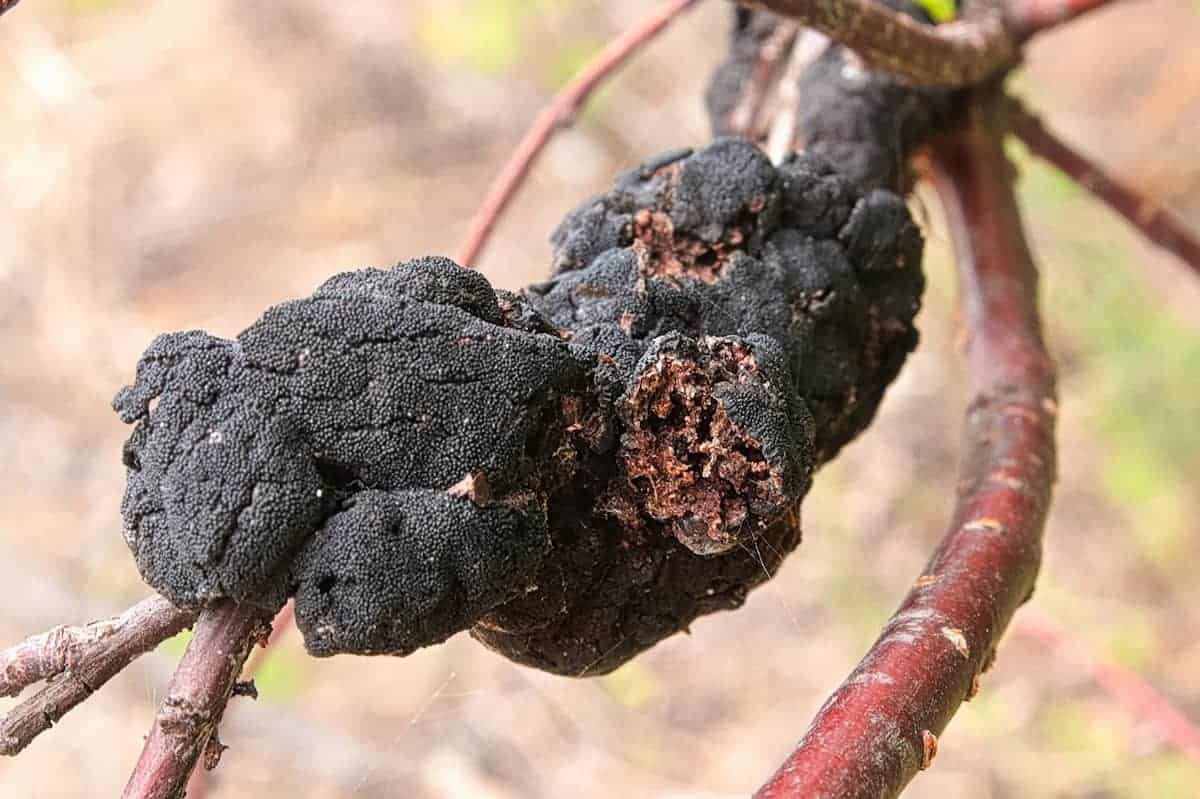Blog
Guide For Black Knot Disease Treatment

Anyone who has fruit trees in Alberta knows they can be prone to disease unless carefully monitored and treated. One disease common to our area is black knot fungus. Take time to learn the facts about this tree disease so you can keep your tree healthy and thriving.
What is Black Knot Disease?
Black knot is caused by a fungus that impacts a wide variety of Prunus tree species, including plums, apricots, and cherries. It’s also aggressive on Schubert chokecherry, peach and Mayday trees in Alberta.
Tree surveys in Alberta have found an increase in cases of black knot disease in trees on commercial, municipal and private properties and natural settings. The fungus spreads quickly and turns beautiful flowering ornamental trees black and gnarly. Besides ruining the esthetic value, black knot stunts tree growth.
Are you wondering, “Will black knot kill my tree?” The answer is yes, if the fungus is left to spread and grow over many years without treatment.
What Black Knot Fungus Looks Like
Knowing the appearance and warning signs of black knot fungus is essential to effective treatment and control. Black knot fungus results in black or greenish-brown tar-like swellings that grow on the branches of a fully infected tree.
However, there are more subtle warning signs you may notice before the disease gets out of control. Watch for these symptoms between April and June, particularly during wet, warm weather:
- A small, light-brown swelling on or around former or current growth
- Enlarged swellings that appear as velvety, olive-green knots (indicating progressed growth from the previous year’s brown swellings)
By the time you see olive-green knots, spore release is imminent. The fungus releases spores heavily during blossom time, just before trees begin to leaf. After the spores are released, the knots turn dark. By autumn, they appear as black knots, hence their name.
Knots will continue to grow until they surround a given branch and kill it. If the infestation spreads, it may eventually kill the tree itself.
Black Knot Disease Prevention and Treatment
As with any tree disease, vigilance is key. Here are some helpful tips about how to get rid of black knot fungus:
- Examine all trees annually for black knot fungus. Remove diseased branches from any infected trees, including those trees adjacent to your property, if possible.
- Try to prune at least 5 to 10 centimetres below each knot. This helps contain fungus that grows beyond the knot itself. If you can’t remove major limbs, cut the knot down to healthy wood about 1.5 centimetres beyond the knot. Prune annually until the disease is eradicated.
- Destroy the infected branches and knots immediately by burning, burying or removing them from your property. Diseased knots can release spores for up to four months after they’re removed.
- Clean and disinfect your cutting tools after pruning, especially if you’ve cut through knotted and infected branches.
- Don’t plant new prunes, cherries or plums downwind from or adjacent to areas with a significant black knot infestation.
- Avoid fungicides, as they won’t be effective when pruning or sanitation is Fungicides aren’t recommended for urban areas.
Regular tree care and proper maintenance are the best ways to keep trees healthy and resistant to diseases and pests. Proper pruning from a certified arborist ensures adequate canopy ventilation, which can prevent spores from gaining hold.
How Does Black Knot Fungus Spread?
Black knot fungus spores lay dormant through the winter and are released in the spring following periods of warm, wet weather. The spores typically travel from tree to tree by the wind, but they can also spread by splashing water, birds and insects.
Alberta Trees At Risk of Black Rot Disease
Many types of trees found in Alberta are at risk of developing black rot disease, including:
- Amur Cherry
- Apricot
- Black cherry
- Chokecherry
- Dropmore cherry
- Flowering almond
- Flowering plum
- Japanese plum
- Korean cherry
- Mayday tree
- Mongolian cherry
- Nanking cherry
- Pin cherry
- Cultivated plum
- Wild plum
- Prunus hybrids
- Sand cherry
- Sour cherry
Is Black Knot Fungus Harmful to Humans?
Black knot fungus isn’t harmful to humans, so you don’t have to worry about touching it or inhaling spores.
Tree Disease Treatment in Calgary and Edmonton
At ArborCare®, our experienced and certified arborists are trained to identify black knot disease and a host of other tree diseases and conditions. We can effectively prune diseased trees on your residential or commercial property to prevent fungal diseases from spreading. Contact us today to learn more and book an appointment.
 1-877-444-8733
1-877-444-8733